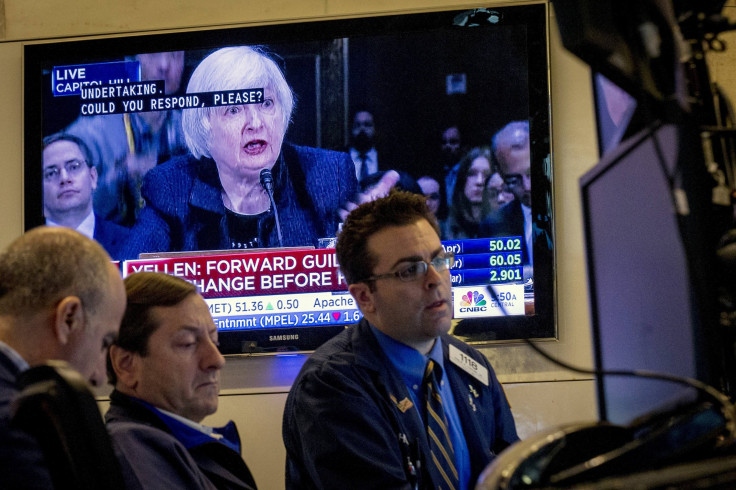Dow Jones Industrial Average Skyrockets 200 Points, Nasdaq Composite Briefly Hits 5000 Milestone On FOMC Statement

U.S. stocks skyrocketed Wednesday, with the Dow Jones Industrial Average surging more than 200 points, after the U.S. Federal Reserve dropped "patient" from its monetary policy statement. The move signaled the central bank is on course to raise interest rates in June at the earliest.
The Dow (INDEXDJX:.DJI), which measures the share prices of 30 large industrial companies, soared 227.11 points, or 1.27 percent, to close at 18,076.19; the S&P 500 Index (INDEXSP:.INX), which tracks the share prices of the nation's 500 largest publicly traded companies, added 25.14 points, or 25.14 percent, to end at 2,099.42. The Nasdaq composite (INDEXNASDAQ:.IXIC) gained 45.39 points, or 0.92 percent, to finish at 4,982.83.
Following the Fed’s announcement, the tech-heavy Nasdaq composite briefly hit the psychologically important 5,000 milestone for the second time this month, a level not seen since the dot-com bubble era. Meanwhile, the Russell 2000 index, which measures the performance of the small-cap segment of the U.S. equity market, also climbed to an all-time high of 1,246.02 in afternoon trading.
Separately, the U.S. dollar tumbled Wednesday following the Federal Open Market Committee's (FOMC) announcement, dropping more than 2 percent against the euro to $1.09. The euro had previously plunged below $1.05 last week to its lowest level in 12 years.
Although a rate increase remains unlikely at the Fed’s next meeting in April, Fed chair Janet Yellen said the central bank has not ruled out a rate hike in June. The consensus among market professionals is roughly split in half with most favoring a rate hike in June; however, some experts expect the Fed to raise rates closer to fall.
“My bet at present is September,” said Robert Hockett, professor of law at Cornell Law School.
Whenever it happens, the Fed’s inevitable rate hike will affect three key things for U.S. consumers, including refinance rates on mortgages and zero percent rates on credit cards. This also means consumers should try to chip away at lower variable debt, such as credit cards and student loans, before interest rates begin to climb.
Economists will sort through a batch of economic data Thursday that includes weekly jobless claims. Fewer Americans filed for unemployment benefits after initial claims fell 36,000 to a seasonally adjusted 289,000 for the week ended March 7, the Labor Department said last week. Economists expect claims to rise 3,000 to 292,000 for last week, according to analysts polled by Thomson Reuters.
© Copyright IBTimes 2024. All rights reserved.




















